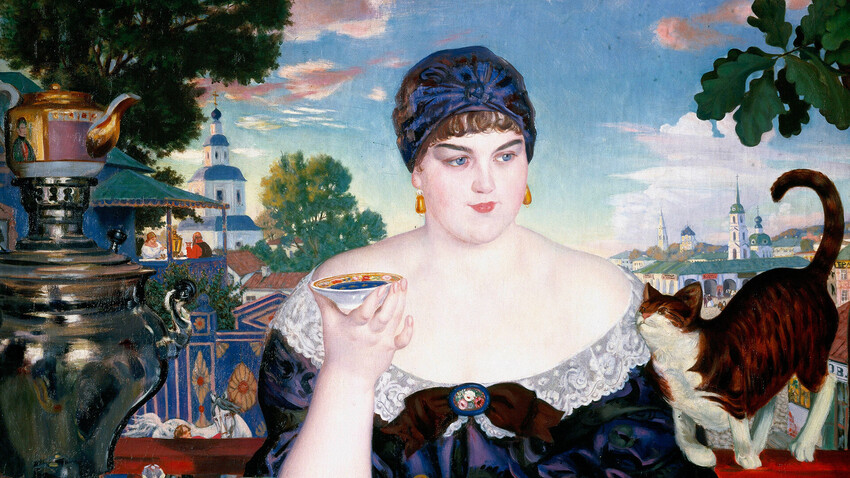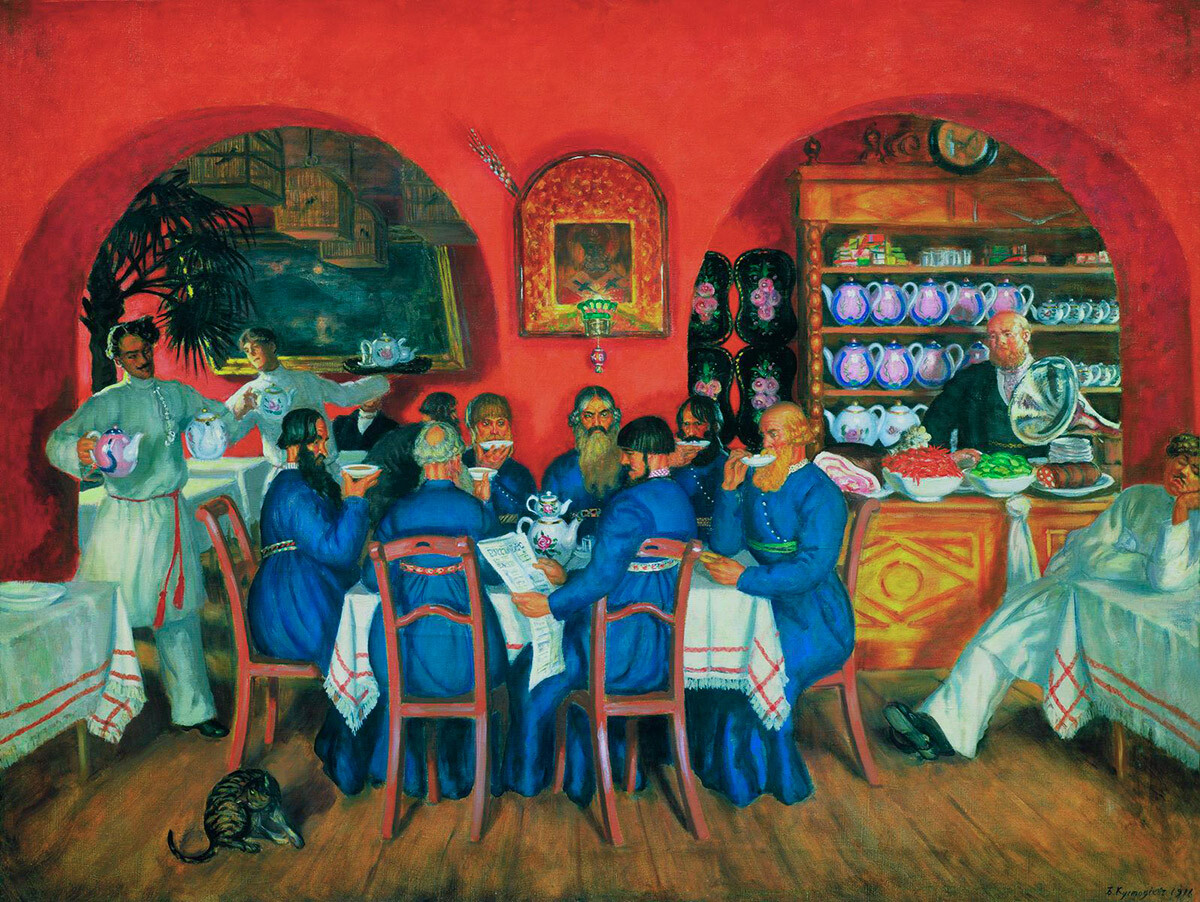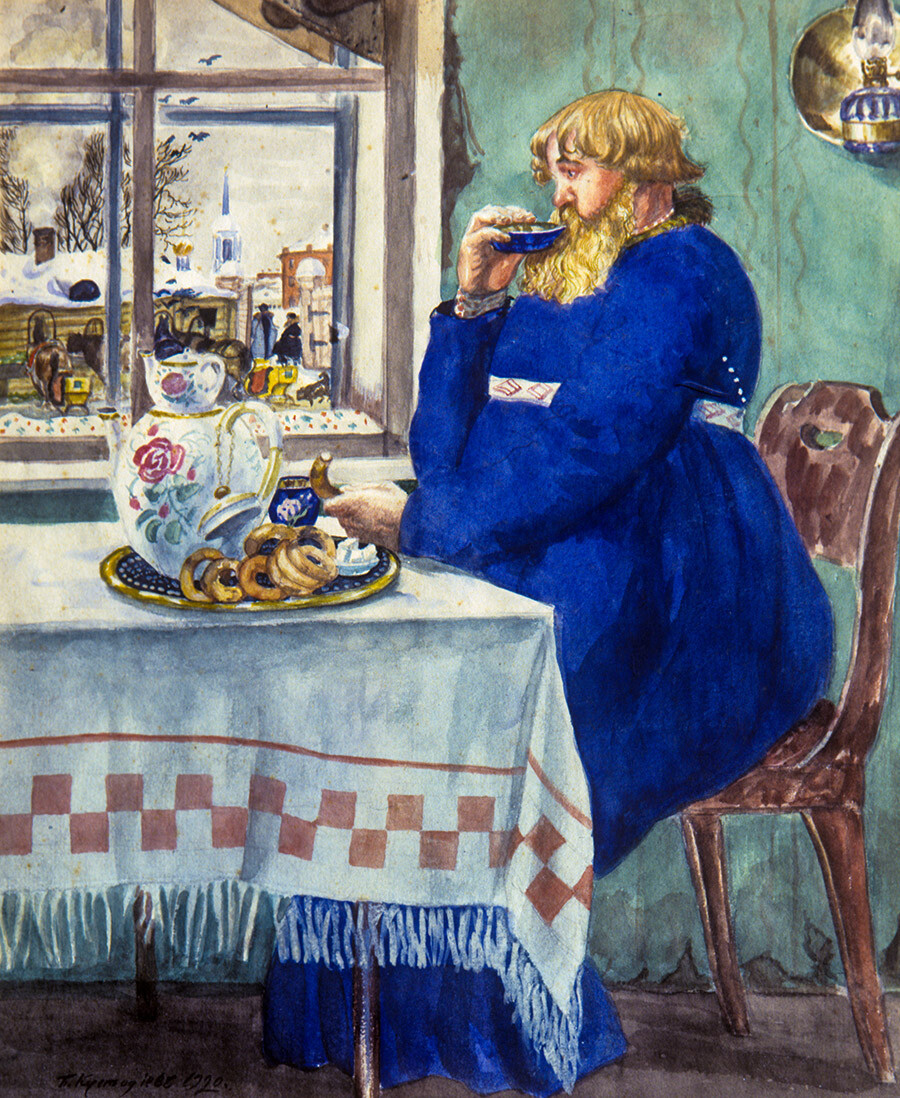
It was hard to find a house that did not have a samovar and an potbelly tea pot. They often drank it in a special way - ‘vprikusku’ (“as a bite”). But, what does this mean?

Overseas dried leaves have long been used as medicine. This drink was not available to everyone, but only very wealthy people: for a pound of tea (a little more than 450 grams), merchants asked from two to six rubles, while 16 kilograms of rye flour cost only 35 kopecks. But, over time, tea became more affordable and a truly popular drink.

It was served with jams and breads, various candies, dried fruits and pastries. And, of course, sugar: as it was also quite expensive, people came up with an original way to prolong the pleasure. They drank tea with a piece of sugar clenched in their teeth, i.e. “as a bite”. This way, it lasted for a long time, for several cups. But, the wasteful way, when sugar was added to the cup and stirred, was called ‘vnakladku’ ("overlay"). The most enterprising, however, drank tea ‘vdogonku’ ("to catch up"): for this purpose, a piece of sugar was placed on a piece of bread and gradually shifted when taking a bite and sipping some tea, leaving it for last.
Dear readers,
Our website and social media accounts are under threat of being restricted or banned, due to the current circumstances. So, to keep up with our latest content, simply do the following:
If using any of Russia Beyond's content, partly or in full, always provide an active hyperlink to the original material.
Subscribe
to our newsletter!
Get the week's best stories straight to your inbox